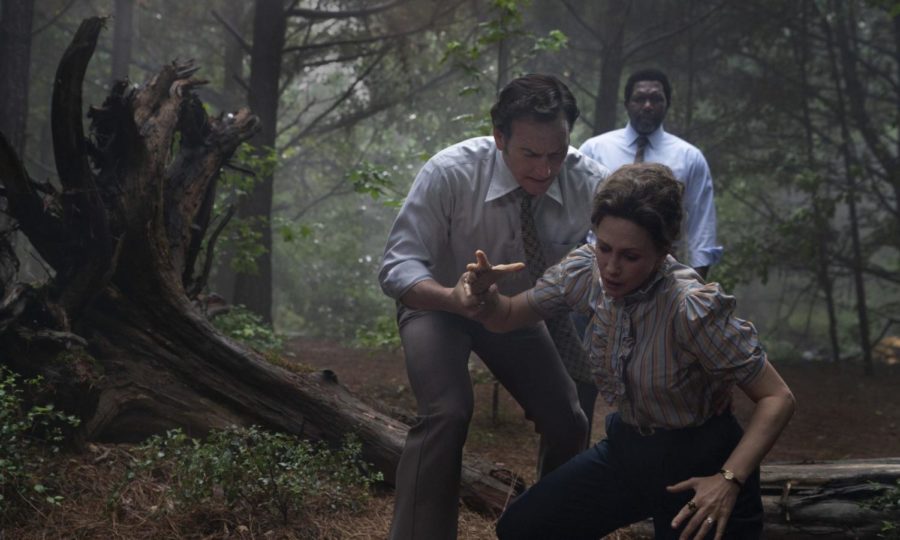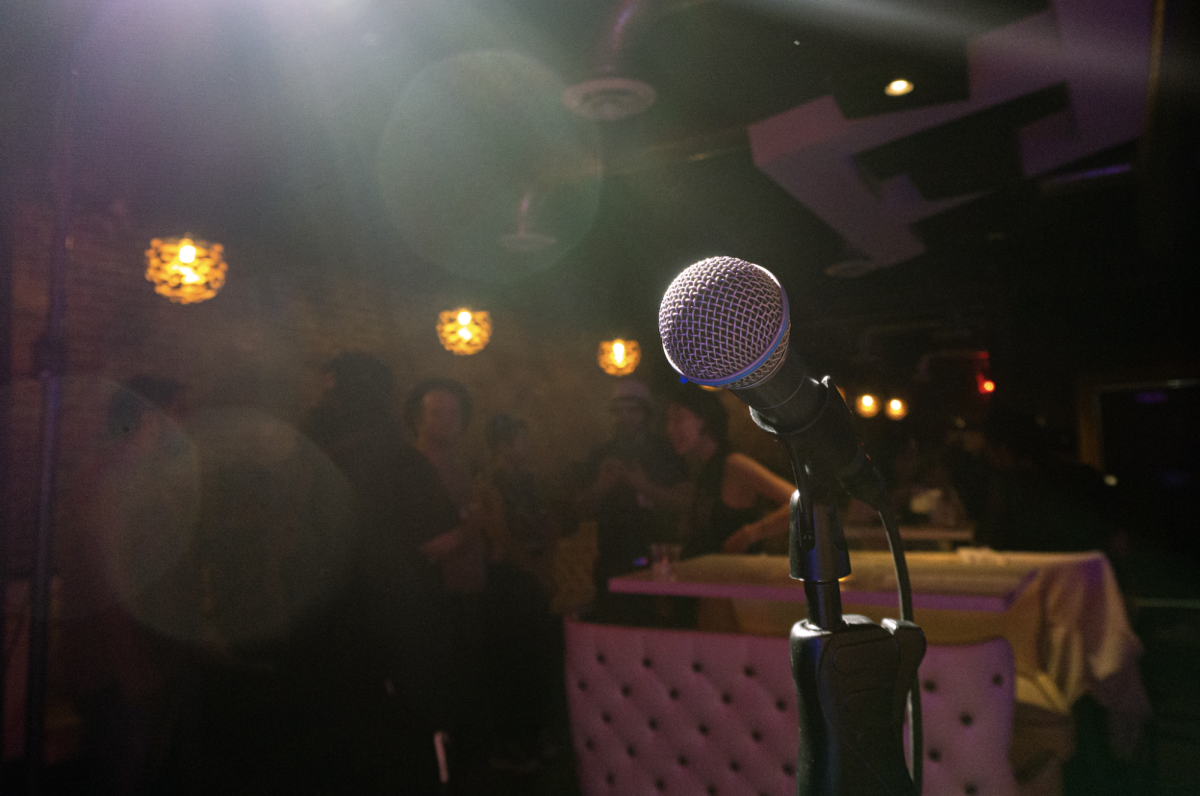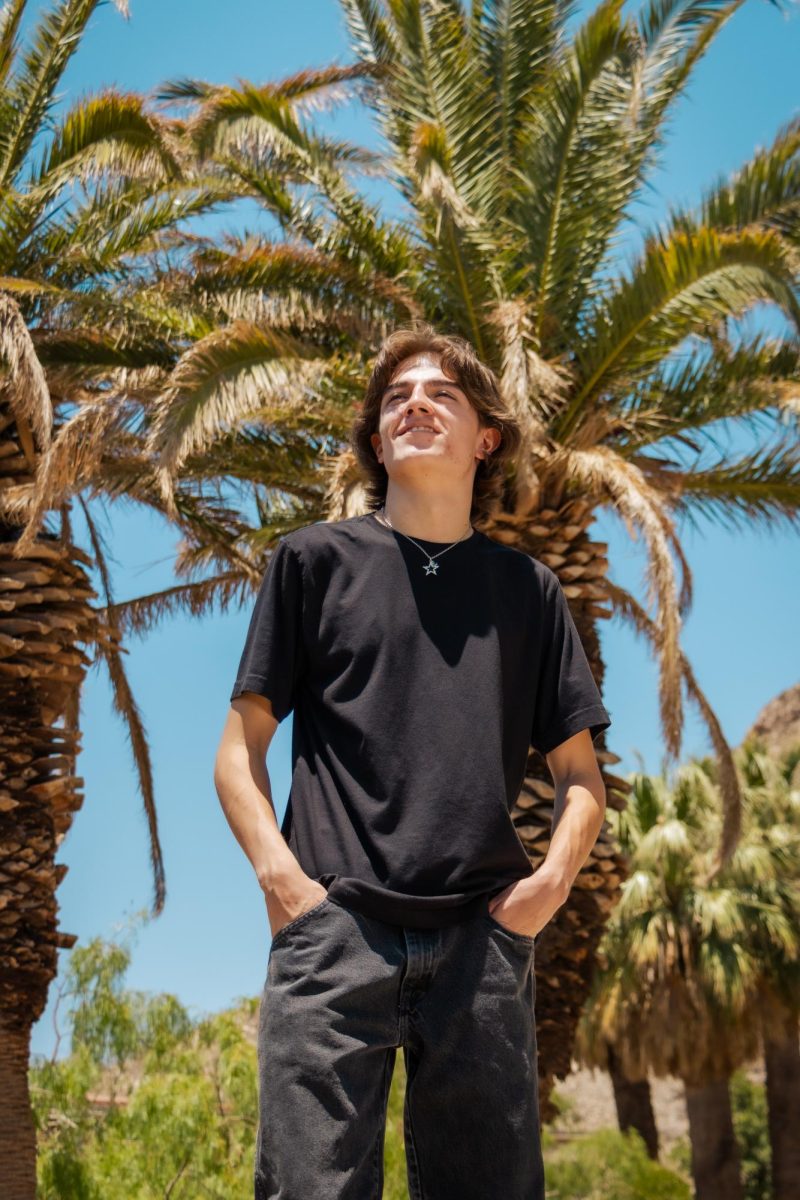THIS LATTER HALF OF THIS REVIEW WILL CONTAIN SPOILERS
While the films of the Conjuring Universe are by no means renowned for innovative or subversive horror, the predictability factor and exhausted subject matter made for one of the most lackluster entries in the series.
“The Conjuring: The Devil Made Me Do It” is the third ‘Conjuring’ film and the eighth film in the franchise universe overall. Directed by Michael Chaves and written by David Leslie Johnson-McGoldrick, the film breaks away from the haunted house horror of its predecessors in favor of a dramatized retelling of the story behind the real-life 1981 murder trial of Arne Johnson.
The film once again follows famed demonologists Ed and Lorraine Warren (Patrick Wilson and Vera Farmiga) as they investigate a series of possession-driven murders. When the exorcism of 8-year-old David Glatzel results in the transfer of the demonic spirit into Arne Johnson (Ruairi O’Connor), giving Ed a heart attack in the process, Arne violently murders his landlord, Bruno Sauls, under the deranged hallucinations caused by the malevolent force. When it is revealed that a nearly identical murder occurred across the nation, the Warrens embark on a search for proof to justify in court that Arne is innocent by reason of demonic possession.
One striking feature of the film is its stark contrast in subject matter and story from the previous Conjuring films and the other films in the series. Much in the way that “Halloween III: Season of the Witch”(1982) turned away from Michael Myers and disappointed fanatics, followers of “The Conjuring” films will notice a complete absence of recognizable demons or storylines that weave this film into the others. Bear in mind, departure from a formula is welcome, even necessary, when looking to keep a franchise refreshing and interesting – however, leaving behind the core elements of narrative and effective scares without replacing them with something new only results in an incomplete film.
SPOILERS FROM THIS POINT ONWARD
The most prevalent issue arises from poor writing and the main antagonist of the film becoming a tangible, but uninteresting, human being. It is discovered that the cause of David’s possession and subsequently Arne’s, is a witch totem placed under the house by an elusive occult group known as Disciples of the Ram. Arne is therefore subject to a curse by a woman only referred to as “The Occultist,” who requires three deaths to occur to complete the curse. All prior antagonists in the Conjuring Universe are inhuman demonic spirits of incomprehensible malevolence. The threat of the spirits violating the mortal bodies and faith of vulnerable individuals and subjecting their families to great fear and torment is what made the films interesting. Choosing to make an unnamed, unaffiliated woman the main antagonist of a supernatural horror film about possession did not translate well at all.
Understandably, this witchcraft element had to be introduced for narrative purposes, because the actual possession plea in the murder case would not stand for the duration of a feature length film. However, the creative choice had already been made to invent new, fictional elements – there is no reason a new demon could not be the main antagonistic force and the inconsistency in motives makes investment in the stakes of the film nearly impossible. Demons in films prior lost power when their names were revealed, but this film only refers to the central villain as “The Occultist,” the daughter of Kastner, a former priest who is helping the Warrens. Kastner studied the occult and his daughter’s “fascination” grew in witchcraft. No name, no relation to the curse’s subjects, and no real motive other than starting a curse.
The curse itself does not even stand to follow its own rules. Ed reads that there must be three deaths, one by murder and one by suicide, with the third unstated. However, Kastner says the three subjects must be a child, a lover and a lover of God. The would-be child death, David, is avoided when Arne becomes the spirit host. Arne and Jessica, the other curse subject that lives across the nation, both murdered someone, and Arne is influenced to try and kill himself but is stopped. Ed is determined to be the lover of God, the third death, but he does not try to kill himself or get killed in any way. The curse is also said to only be broken by the altar of The Occultist being destroyed, but Lorraine somehow manages to help Ed break free by reminding him of the happy day that they first met – the same trick that worked in the conclusion of the first “Conjuring” film.
Beside severe plot holes and character flaws, the film inserts a number of teeth-gritting moments that could have been left out. One of these moments occurs while Arne wipes floors at a penitentiary – an inmate takes the form of Bruno Sauls’ corpse and begins to spoken-word recite the lyrics to Blondie’s 1980 hit “Call Me” before a jump scare.
Choices such as this lean into a discussion about the editing and direction. Chaves is a new-comer in the world of horror, with his only other film being his directorial debut 2019’s “The Curse of La Llorona.” It was an interesting choice by the studio to choose such a new face to inherit one of the most successful contemporary horror franchises. “The Conjuring Universe” was spearheaded by director James Wan, known for blockbuster films and cult horror smash hits like “Saw” (2004) and “Insidious” (2011). Wan is an auteur with notable “-isms” to his directing style, such as extensive, uncut tracking shots, wide shots in enclosed spaces and dizzying spin editing. Wan’s directing made every space and environment feel like an entity itself – and these stylistic touches are glaringly absent in “The Devil Made Me Do It.”
Chaves emulates Wan’s long takes only once and uses standard cuts for the rest of the film, which makes the single long take stick out. Within the first five minutes of the film, the infamous shot of a light post illuminating a priest in front of the house from “The Exorcist”(1973) is copy-pasted. The entities in this film are seen only by the curse’s victims through strange psychedelic hallucination sequences, not by everyone in the film’s world. The score is also noticeably lacking – one of the first jump scares of the film loses its bite when the sound effect is nearly just a muffled rustling noise, and it fails to build tension during chase sequences or buildups. Chaves also utilizes fade-to-black between scenes inconsistently, disrupting the immersion of the viewer by drawing attention to the scene transitions. Giving Chaves the benefit of the doubt, perhaps he is nodding at his influences and just has not found his own “-ism” and style yet, but a horror franchise as big as “The Conjuring” was not the right place to flex undeveloped muscle.
To give credit where it is due, the visuals of the film’s climax made the rest of the film somewhat worth suffering through. The CGI and makeup in this film improved significantly from years past, and while the creatures were mostly uninteresting, they were visually striking and grotesque. In a chase through the tunnels beneath Kastner’s farm to find The Occultist’s altar, the chiaroscuro lighting helps to invoke a wonderful dichotomy of warmth and dread, channeling Renaissance works of the various adversaries of heaven and judgement. The intensity of Wilson and Farmiga’s performances is excellent, and the constrictive environment finally doubles-down on the tension and time-sensitive situations the film centered around. Although the death of The Occultist is anticlimactic, the film managed to at least zero in on one good punch.
Overall, “The Conjuring: The Devil Made Me Do It” likely won’t be the worst horror film you will see this year, but it certainly sits shallow in memory and tiers lower than its predecessors. For the fanatics and those looking for a supernatural movie to play second to the spooky sounds your ice-maker makes at 3 a.m., this will do just fine.
Julian Herrera can be reached through [email protected] and @jay_at_utep on Instagram.









